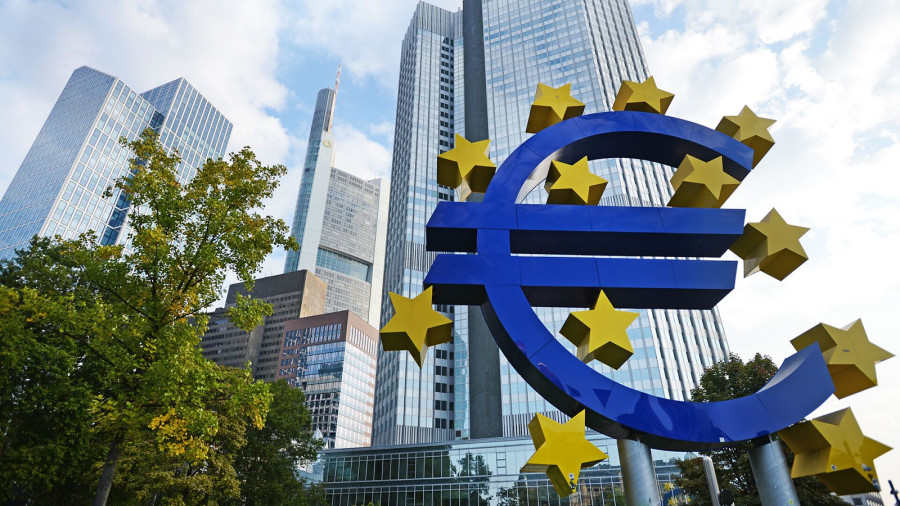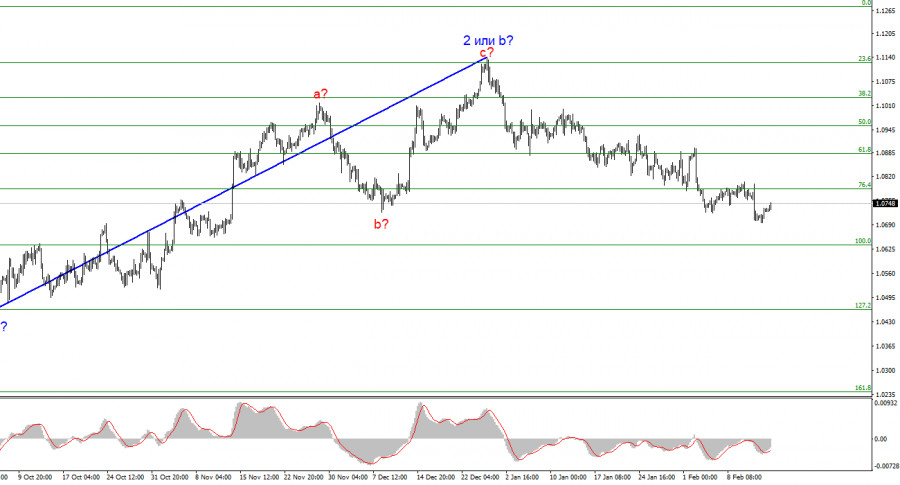
The report on the UK GDP for the fourth quarter was released. It turned out that the economy contracted not by 0.1%, as expected, but by as much as 0.3% in quarterly terms. To some, this figure may seem insignificant, but each new quarter shows that the UK economy is distinctly declining. If earlier we observed alternate values with minimal deviations from zero, now we see a vivid "negative."
However, in this review, we will consider the European economy and its prospects. The last quarter showed a contraction of 0.1%, and the European Commission just announced forecasts for 2024-2025. According to the report, the growth outlook for 2024 is revised down to 0.8% and economic activity is still expected to expand by 1.5% in 2025. However, it is not the growth rates that matter, but the fact that the previous version of the forecasts was higher. Earlier, the European Commission expected growth of 1.2% from 2024. As we can see, not only GDP indicators but also forecasts for these indicators are decreasing. Did European Central Bank President Christine Lagarde have these data in mind when she mentioned studying rate cuts closer to summer?
Based on all the above, it can be said that the European economy is feeling worse and worse, and the central bank may start lowering rates in the near future not because inflation has slowed down sufficiently, but because the economy has slowed down too much. By the way, the European Commission also presented new forecasts for inflation. For the euro area, the European Commission sees inflation averaging 2.7% this year and 2.2% in 2025. As I expected, inflation will not fall rapidly. Any slowdown in inflation may be followed by acceleration as early as next month. The line between keeping rates and lowering them becomes even thinner, adding a headache to the ECB.
To top it all off, Lagarde spoke in the EU Parliament and said that the disinflation process is at work. She did not specify how quickly it would take place and at what level the Consumer Price Index should fall for the central bank to start discussing easing monetary policy. Therefore, the situation with rates did not become clearer on Thursday. The demand for the euro may continue to fall.

Based on the analysis, I conclude that a bearish wave pattern is being formed. Wave 2 or b appears to be complete, so in the near future, I expect an impulsive descending wave 3 or c to form with a significant decline in the instrument. The failed attempt to break through the 1.1125 level, which corresponds to the 23.6% Fibonacci, suggests that the market is prepared to sell a month ago. I am currently considering short positions with targets around the level of 1.0462, which corresponds to 127.2% according to Fibonacci.

The wave pattern for the GBP/USD pair suggests a decline. At this time, I am considering selling the instrument with targets below the 1.2039 mark because wave 2 or b will eventually end, just like the sideways trend. I would wait for a successful attempt to break through the 1.2627 level as this will serve as a sell signal. Another signal was formed, in the form of an unsuccessful attempt to break this level from below. Now I am quite confident about the instrument's decline, at least to the 1.2468 level, which would already be a significant achievement for the dollar, as the demand for it remains very low.
The material has been provided by InstaForex Company - www.instaforex.comfrom Forex analysis review https://ift.tt/eoQ9hk6
via IFTTT
